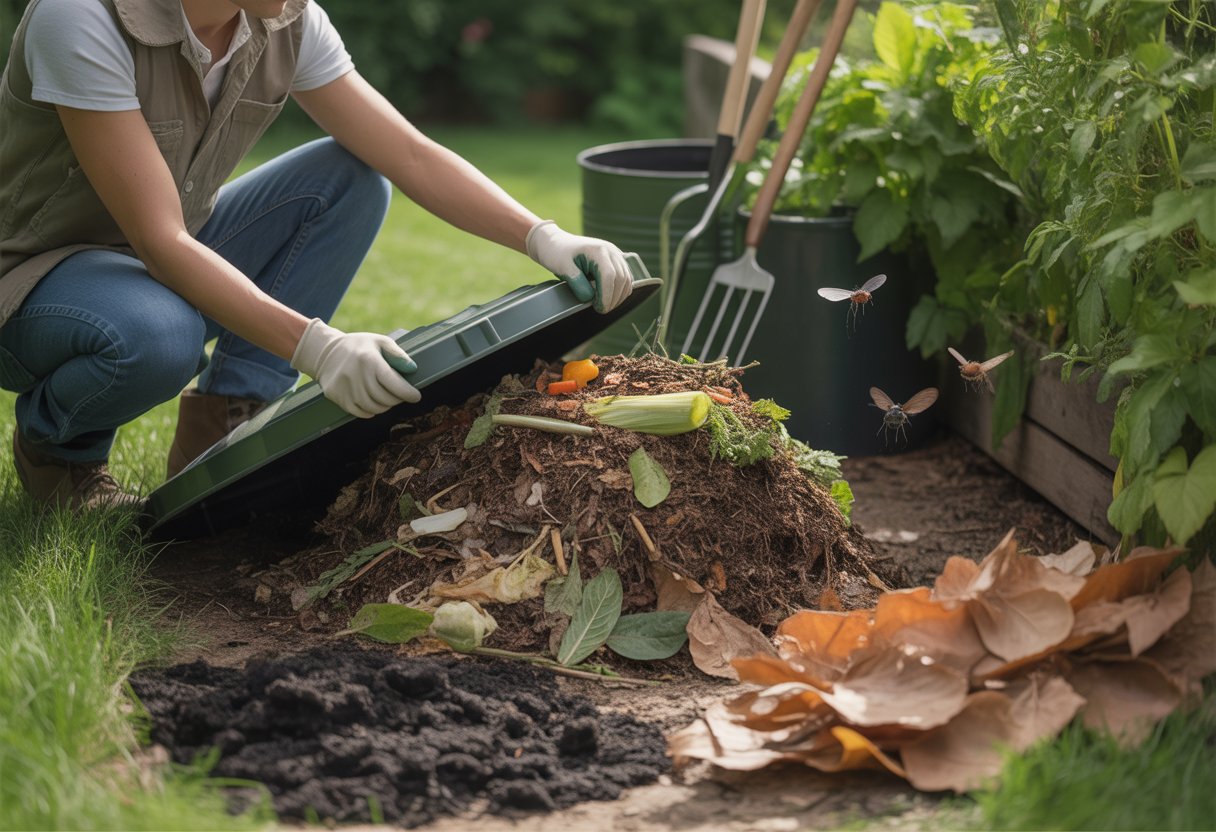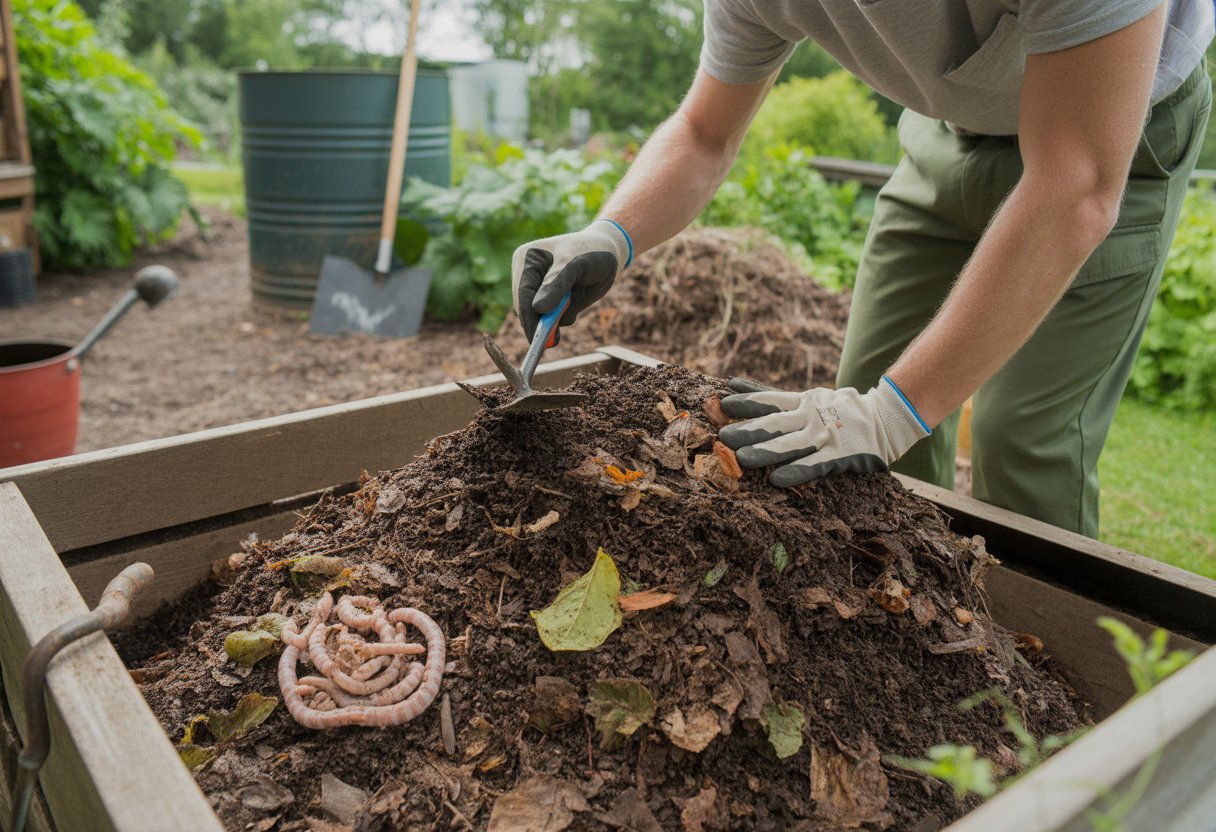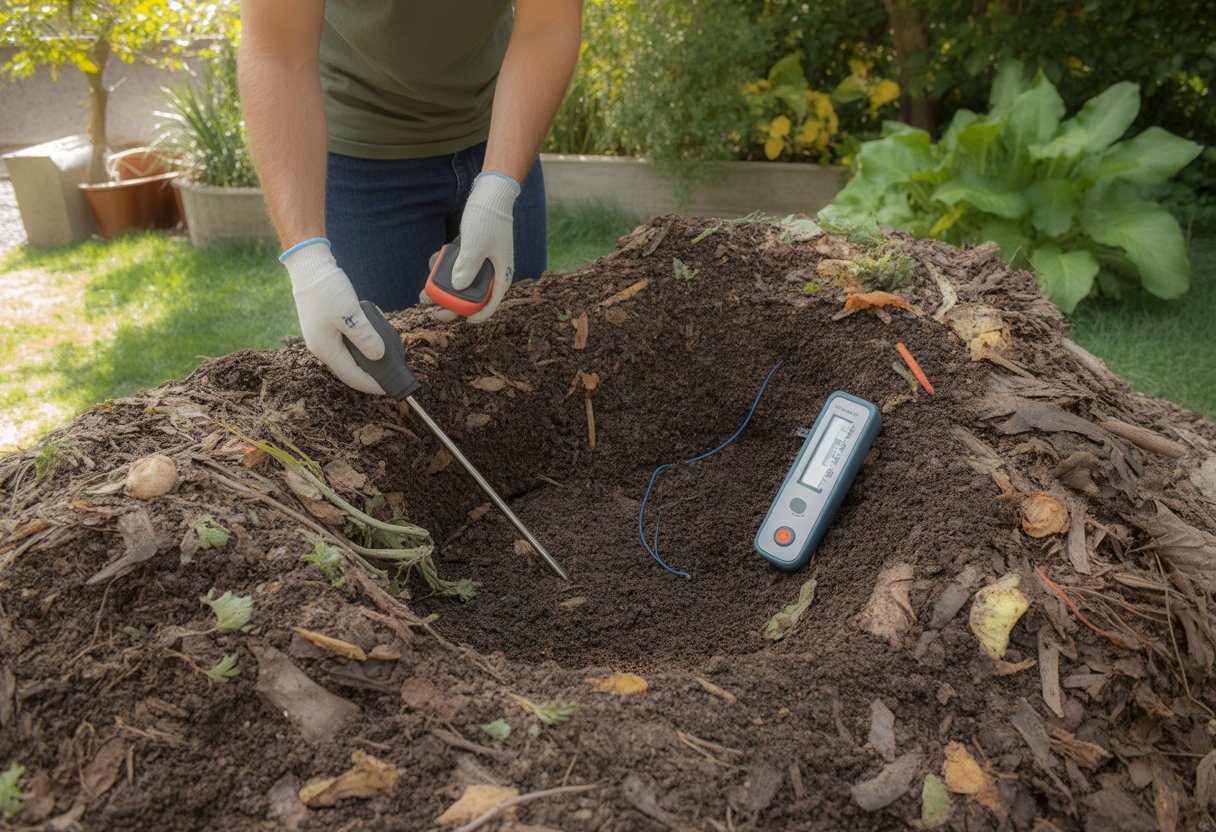Compost Troubleshooting Common Issues and How to Solve Them Efficiently
Many gardeners run into compost troubles when their piles just won’t break down right. Bad smells, slow decomposition, and pests can make composting a headache and even put people off backyard composting.
The key to beating these compost challenges is getting the balance right with moisture, airflow, and the mix of materials.

When compost gets too wet or too dry, everything slows down. Too much green material or not enough browns means you’ll probably get odors or sluggish decay.
Managing your pile well turns scraps into rich soil amendments without all the usual snags.
Causes of Common Composting Issues
Lots of things can throw off composting—poor breakdown, weird smells, you name it. You need the right balance, moisture, and airflow to keep healthy microbial activity in your pile.
Imbalanced Carbon-to-Nitrogen Ratio
The carbon-to-nitrogen (C) ratio really matters for composting. Aim for about 25:1 to 30:1—so, carbon-rich stuff like leaves, straw, or paper, plus nitrogen-rich things like grass clippings, food scraps, and green waste.
If there’s too much nitrogen, compost gets wet and starts smelling like ammonia. Too much carbon, and you’ll end up with a dry, slow pile that doesn’t break down.
You can fix this by tossing in more browns for carbon, or more greens for nitrogen. Keeping that ratio in check helps microbes thrive and gets your compost breaking down faster.
Inadequate Moisture Levels
Moisture keeps microbes happy and active. If the pile dries out, decomposition grinds to a halt.
But if it’s too wet, you’ll get stinky, slimy compost because there’s not enough air.
Compost should feel like a damp sponge—moist, not soggy. Shoot for 40% to 60% moisture.
Add water slowly if things get dry, or mix in dry browns like leaves or shredded paper if it’s too wet. Keep an eye on moisture so microbes can do their thing.
Insufficient Aeration
Microbes need oxygen to break stuff down. If the pile’s packed tight or you don’t turn it, you’ll get smells like rotten eggs and slow compost.
Turn or mix the compost often to get air in and spread moisture and heat. Bulky browns like wood chips can open things up and boost airflow.
Good aeration keeps the pile aerobic and speeds up the whole process.
Diagnosing and Resolving Odor Problems
If your compost stinks, it’s almost always about moisture, airflow, or microbial balance. Finding the cause quickly helps keep the pile healthy and supports good compost.
Bad Odor Causes and Solutions
Most bad smells come from too much moisture or the wrong mix of greens and browns. Wet, packed compost cuts off oxygen and makes those sour, ammonia-like odors.
Add dry, carbon-rich stuff like shredded leaves or straw to soak up extra water and open things up. Turning the pile brings in oxygen and helps microbes break things down the right way.
If the smell won’t quit, try adding compost activators or finished compost to boost beneficial microorganisms. Don’t dump in loads of grass clippings or other nitrogen-heavy stuff all at once.
Anaerobic Conditions and Odor Control
When oxygen drops too low, you’ll get nasty odors like rotten eggs. Usually, this happens if the pile structure is poor or there’s just too much water.
Break up the pile and mix in bulky materials like wood chips or straw to let air in. Turn the pile often to stop anaerobic pockets from forming.
If the pile’s soggy, add sawdust or dry leaves to soak up moisture. You want it damp, not dripping, so microbes can breathe.
Earthy Smell as a Compost Health Indicator
A subtle, earthy smell means your compost’s healthy and the microbes are working. That’s what you want.
If you notice that earthy scent, you’re on the right track with moisture, oxygen, and temperature. Finished compost should smell like fresh soil, not something rotten.
Stick with regular turning, check the moisture, and don’t overload with wet or nitrogen-rich stuff. Compost activators can help, but honestly, if it smells right, you’re already doing fine.
Managing Compost Pests and Infestations

Pests usually show up when compost isn’t managed well or the bin’s not set up right. You have to know what you’re dealing with and tweak your methods to keep them out.
Fruit Flies and Food Waste
Fruit flies love compost piles with exposed kitchen scraps, especially fruit peels and sweet leftovers. They lay eggs in the moist stuff and suddenly you’ve got a swarm.
To cut down on fruit flies, bury food scraps at least 6 inches under dry browns like leaves or shredded paper. Covering up waste keeps flies away and reduces smells.
Turning the compost regularly also helps by messing up their breeding spots. If you’re using a worm bin, don’t overfeed with fruit scraps—red wigglers don’t like it, and the flies sure do.
Keep moisture and airflow in check to stop pests from taking over.
Pest Prevention and Management
Good pest management starts with balance. Skip adding meat, dairy, or greasy foods—they just attract rodents and bigger pests.
A sturdy, well-ventilated bin keeps critters out. Lids or fine mesh screens work great for blocking access.
If you spot pests, turn the compost and bury fresh scraps deeper. For stubborn infestations, take out the problem layers and add more carbon-rich materials.
Some folks use natural deterrents like diatomaceous earth around the bin’s edge for extra protection.
Troubleshooting Moisture, Temperature, and Decomposition

Getting moisture, temperature, and decomposition right is everything in composting. Check these often, and you’ll avoid most of the usual problems.
Excess Moisture and Drainage
Too much moisture means less oxygen, which slows decomposition and brings on bad smells. The pile should feel like a wrung-out sponge—damp but not dripping, around 40-60% moisture.
If it’s too wet:
- Toss in dry, carbon-rich materials like shredded leaves or straw.
- Loosen the pile or poke some drainage holes in the bin.
- Don’t overload with wet scraps.
Keep an eye on moisture levels. Using a compost aerator can help dry out soggy spots and get more air in.
Temperature Fluctuations and Monitoring
Temperature tells you how active your microbes are. The sweet spot is 130°F to 160°F.
If it drops below 100°F, things are slowing down. Over 160°F, you might kill off the good microbes.
Grab a compost thermometer and stick it into the middle of the pile to check.
If temps are off:
- Turn the pile to move heat and air around.
- Add water for dryness or more browns if it’s soggy.
- Insulate the pile in cold weather to keep it warm.
Keeping temperature steady helps your compost break down faster and keeps those microbes busy.
Slow Decomposition and Particle Size
Slow decomposition usually happens when the compost pile has big chunks, not enough air, or the mix of materials is off.
If you chop or shred your compost stuff before tossing it in, microbes can get to work faster.
Try turning your pile regularly or use a compost aerator—oxygen really speeds things up.
A good balance of carbon-rich “browns” and nitrogen-rich “greens” keeps those microbes happy and busy.
Pay attention to the smell, temperature, and texture. These clues can tip you off if things are slowing down.

